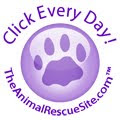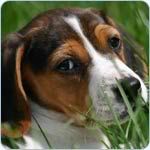This article is repost from MySpace, I never met this woman, I wish I had because in my eyes, she was a hero.
This was written by the woman who founded PyrAngels, the Great Pyrenees rescue network, who died at home over the weekend. She was a huge resource, a source of inspiration for many, and a very tough act to follow.
I Want to Quit (This Is What Animal Rescue Is Like) By Joan C. Fremo (R.I.P.)
I want to quit!
My health is bad. There are days I feel so terrible that I can barely move. My phone bills are outrageous, and I could have replaced my van with the funds I have spent these last 3 years---on animals that were not my own.
I want to quit!
I spend hours and hours emailing about dogs. There may be 500 messages when I start---and at 4 AM, when I finally shut down the computer, there are still 500 emails to be read.
I want to quit!
Gosh, I haven't the time left to email my friends. I can't remember the last book I read, and I gave up my subscription to my local newspaper--- I used to enjoy reading it, cover to cover, but now it often ends up in the bottom of the squirrel's cage---unread.
I want to quit!
I've spent days emailing what seems like everyone-....--trying to find a foster home, help for a dog languishing in a shelter---but his time has run out, and the shelter has had to euthanize to make room for the next sad soul.
I want to quit!
I swear, I walk away from my computer to stretch my legs---let the dogs out---and come back to find another dog in desperate need. There are times I really dread checking my email. How will I find the funds, the help, to save yet another dog?
I want to quit!
I save one dog, and two more take its place. Now an owner who doesn't want his dog---it won't stay in his unfenced yard. An intact male wanders... This bitch got pregnant by a stray... This
3-month-old pup killed baby chicks.. The dog got too big... This person's moving and needs to give up his pet. I ask you, friends---what town, what city, what state doesn't allow you to own a pet?
I want to quit!
I just received another picture, another sad soul with tormented eyes that peer out of a malnourished body. I hear whimpering in my sleep, have nightmares for days...
I want to quit!
Many of the "Breed People" don't seem to want to hear about these dogs. Breeders either don't realize, or just don't care, how many dogs of their breed are dying in shelters.
I want to quit!
I just got off the phone. "Are you Pyr Rescue? We want to adopt a male to breed to our female." How many times do I have to explain? I have tried to explain about genetics, about health and pedigrees. I explain that rescues NEUTER! I usually end up sobbing, as I explain about the vast numbers of animals dying in shelters across the country, as I describe the condition many of these animals are found in. I wonder if they really heard me...
I want to quit!
It is not like I don't have enough rescues of my own to worry about---but others have placed dogs improperly and aren't there to advise the new owners.
I want to quit!
There ARE some unscrupulous rescues out there---hoarders, collectors, and folks who will short change the care of the animals to make a dollar. They save them all, regardless of temperament, putting fellow rescuer's and adopters at risk by not being truthful.
I want to quit!
I have trusted the wrong people--- had faith and heart broken...
I want to quit!
AND THEN... My dog, Magnus, lays his head in my lap, he comforts me with his gentle presence---and the thought of his cousins suffering stirs my heart.
I want to quit!
AND THEN... One of those 500 emails is from an adopter. They are thanking me for the most wonderful dog on earth---they cannot imagine life with out their friend---their life is changed, and they are so grateful.
I want to quit!
AND THEN... One of my adopted Rescues has visited a nursing home. A patient that has spent the last few years unable to communicate, not connecting-- -Lifts his hand to pat the huge head in his lap, softly speaks his first words in ages--- to this gentle furchild.
I want to quit!
AND THEN... A Good Samaritan has found and vetted a lost baby, "I can't keep him, but I'll take care of him until you find his forever home."
I want to quit!
AND THEN... "Jamie took his first steps holding on to our Pyr." "Joan, you should see this dog nursing this hurt kitten!" "I was so sick, Joan, and he never left my side..."
I want to quit!
AND THEN... I get an email from a fellow rescuer, "Haven't heard from you in a while---you OK? You know I think of you..."
I want to quit!
AND THEN... A dozen rescuers step up to help, to transport, to pull, and to offer encouragement. I have friends I have never seen, but we share tears, joys, and everything in between. I am
not alone I am blessed with family of the heart, my fellow Rescuers. Just days ago it was a friend who shared her wit and wisdom, whose late night email lifted my heart. Sometimes it is friends who only have time to forward you a smile.
Often, it is my friends who forward me the notices of dogs in need. There are Rescuers who see a flailing transport and do everything they can do find folks to pull it together for you. Rescuers who'll overnight or foster your Dog while you seek transport. There are Rescuers not used to or comfortable with your breed, but who put aside their discomfort to help.
There are Rescuers whose words play the music of our hearts. Foster homes that love your Rescue, and help to make them whole again---body and spirit.
Foster homes that fit your baby in, though it may not be their breed. Rescuers whose talents and determination give us tools to help us. Rescuers we call on for help in a thousand ways, who answer us, who hear our pleas. Rescuers who are our family, our strength, our comrades in battle.
I know I cannot save every Pyr in need. I know my efforts are a mere drop in a sea. I know that if I take on just one more---those I have will suffer.
I want to quit! But I won't. When I feel overwhelmed, I'll stroke my Magnus's head while reading my fellow Rescuers emails. I'll cry with them, I'll laugh with them---and they will help me find the strength to go on.
I want to quit! But not today. There's another email, another dog needing Rescue.
This piece is dedicated, with love and gratitude, to all my fellow Rescuers.
Joan
































 Cruelty to Animals: A First Amendment Right?
Cruelty to Animals: A First Amendment Right? Should videos depicting dogfights and the killing of small animals be viewed not as animal cruelty, but as expressions of free speech?
Should videos depicting dogfights and the killing of small animals be viewed not as animal cruelty, but as expressions of free speech?







